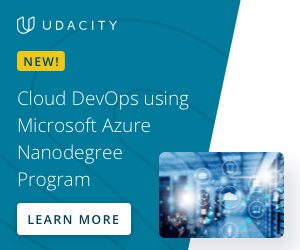The 9 Best Google Cloud Platform Courses on Pluralsight for 2025


Solutions Review compiled the top Google Cloud courses on Pluralsight for cloud and Google Cloud engineers of all skill levels.
Google Cloud skills are in high demand among organizations that are looking to operate and maintain their organization’s Google Cloud Platform resources. The pandemic and subsequent ‘new normal’ of remote work are furthering demands for these skills. Many are turning to online learning platforms to up their game and acquire the Google Cloud skills most likely to help them stand out. And whether you are looking to acquire those skills for work or for play, this collection of Pluralsight Google Cloud courses will help you learn the ropes so you can pilot some of the most widely used tools in no time!
With this in mind, the editors at Solutions Review have compiled this list of top-rated Pluralsight Google Cloud courses to consider taking. This platform is perfect for those looking to take multiple courses or acquire skills in multiple different areas, or for those who want the most in-depth experience possible through access to entire course libraries or learning paths. In sum, Pluralsight offers more than 7,000 expert-led video courses.
Note: We included courses that had a 4.5-star rating or higher and at least 10 student reviews.
Click GO TO TRAINING to learn more and register.
The Best Google Cloud Platform Courses on Pluralsight
Architecting Google Cloud Storage Configurations
“In this course, Architecting Google Cloud Storage Configurations, you will learn how to create and harness elastic storage functionality on the cloud and understand how you can migrate your on-premise data to the GCP. First, you will understand where exactly Cloud Storage fits in the range of storage services offered by the GCP. Then, you will see the features and pricing of the different kinds of Cloud Storage buckets and how to make the right choice for your use case. Next, you will explore in a hands-on manner how to create and use Cloud Storage buckets, seeing how data can be moved in and out of buckets, how object metadata can be created and updated, and the lifecycle management of objects. After that, you will administrate and regulate access to buckets and objects within buckets. Finally, you will know how data in buckets can be encrypted using customer-supplied encryption keys, and how objects can be made publicly accessible either permanently or for a limited time-period using signed URLs. At the end of this course, you will be comfortable creating, configuring, and regulating access to Cloud Storage buckets on the Google Cloud Platform.”
GO TO TRAINING
Choosing and Implementing Google Cloud Compute Engine Solutions
“In this course, Choosing and Implementing Google Cloud Compute Engine Solutions, you will learn how to create, run, and manage virtual machines on the Google Cloud Platform (GCP). You will start off by understanding the breadth of offerings from the Google Cloud Platform – ranging from pure IaaS offerings such as the Google Compute Engine to pure PaaS offerings like the Google App Engine. Next, you’ll see how you can create and work with these VM offerings on the cloud. You’ll create and connect to Linux as well as Windows machines, reserve static IP addresses, attach local SSDs to VMs, communicate between VMs on a network and connect to Cloud Storage buckets. You’ll then move on to administrating these instances on the cloud. You’ll see how availability policies, to handle VM migrations, can be configured, how disk images and snapshots can be created, and how you can instantiate VMs using these images and snapshots. Finally, you’ll be shown how to startup and shutdown scripts to customize VMs can be run.”
GO TO TRAINING
Creating and Administering Google Cloud SQL Instances
“In this course, Creating and Administering Google Cloud SQL Instances, you will learn how to create, work with and manage Cloud SQL instances on the GCP. First, you will assess the range of data storage services on the GCP and understand when you would choose to use Cloud SQL over other technologies. Then, you will create Cloud SQL instances, connect to them using a simple MySQL client, and configure and administer these instances using the web console as well as the gcloud command-line utility. Next, you will focus on how Cloud SQL can work in high-availability mode. After that, you will configure failover replicas for high-availability and simulate an outage event to see how the failover replica kicks in. Finally, you will see how to use read replicas for increased read throughput and how data can be migrated into Cloud SQL instances using a SQL dump or from CSV files.”
GO TO TRAINING
Designing and Implementing Solutions Using Google Machine Learning APIs
“In this course, Designing and Implementing Solutions Using Google Machine Learning APIs, you’ll learn how you can use and work with Google Machine Learning APIs, which makes powerful pre-trained models on Google’s datasets. First, you’ll delve into an overview of the machine learning services suite available on the Google Cloud, and understand the features of each so you can make the right choice about what service makes sense for your use case. Next, you’ll discover speech-based APIs allowing you to convert speech-to-text and text-to-speech with additional emphasis support using SSML, and how you can call these REST APIs using simple Python libraries. Then, you’ll learn about Natural Language APIs and see how they can be used for sentiment analysis and for language translation. Finally, you’ll explore the Vision and Video Intelligence APIs in order to perform face and label detection on images.”
GO TO TRAINING
Google Cloud Functions Fundamentals
“Developers want to build serverless microservices so they can create new content, reduce maintenance, scale easily, and deliver new features to users faster. In this course, Google Cloud Functions Fundamentals, you will expand your serverless skills to create high-quality Microservices that will enhance the experience of your app or website. First, you will learn to build unique functions that interact with other Google Cloud services such as Cloud Vision and Cloud Datastore. Second, you will discover advanced concepts such as the function’s file system, idempotent function design, and working through memory and timeout issues. Finally, you will explore how to properly log errors and set up monitoring for your functions so you can continue to monitor them once they are in production. When you’re finished with this course, you will have a high-level understanding of Google Cloud Functions that will allow you to create unique experiences for your customers.”
GO TO TRAINING
Google Cloud Functions: Getting Started
“Developers want to build serverless microservices so they can create new content, reduce maintenance, scale easily, and deliver new features to users faster. In this course, Google Cloud Functions: Getting Started, you will learn the skills you need to create high-quality microservices that will enhance the experience of your app or website. First, you will set up a Google Cloud project, install the gcloud command line tools, and set up Google Cloud Functions on your local machine. Next, you will explore all of the different events your functions can respond to, including storage, PubSub, and HTTP triggers. Finally, you will dive into deploying the functions and see how everything integrates seamlessly into the Google Cloud Platform. When you’re finished with this course, you will have a solid understanding of Google Cloud Functions that will allow you to create and deploy your own microservices that will automatically scale with your users.”
GO TO TRAINING
Google Cloud Platform Fundamentals
“Over the last few years, the cloud has proven itself as a successful enabler for organizations of all sizes to improve agility, scale, reliability, and spend management. It has also made available capabilities that have greatly accelerated the adoption of a wide variety of new types of applications – from big data to Internet of Things. This rapidly expanding set of capabilities can be difficult for anyone to keep up with, and that challenge is further compounded when attempting to map capabilities across different public cloud providers. This course, Google Cloud Platform Fundamentals, provides you with an extensive overview of Google Cloud Platform. While the Google Cloud Platform is a more recent offering than some of its competitors, it draws on years of experience running Google’s massive internal infrastructure and exposes a streamlined set of solution-focused capabilities to help you build great systems.”
GO TO TRAINING
Google Cloud Platform Fundamentals – Core Infrastructure
“This course provides an overview of Google Cloud Platform products and services. Through a combination of presentations, demos, and hands-on labs, participants learn the value of Google Cloud Platform and how to incorporate cloud-based solutions into business strategies.”
GO TO TRAINING
Setting up a Cloud Solution Environment on Google Cloud
“The first steps to getting started on a project on Google Cloud include making critical decisions and building an environment you can use. In this course, Setting up a Cloud Solution Environment on Google Cloud, you will learn foundational knowledge of/gain the ability to set up a project for your organization. First, you will learn how to create projects, manage permissions, and enable APIs. Next, you will discover how to handle billing including exporting your billing information to Big Query. Finally, you will explore how to install the Cloud SDK and set up gcloud to use your projects. When you’re finished with this course, you will have the skills and knowledge of setting up a cloud environment which is needed to build your next great idea.”
GO TO TRAINING
Solutions Review participates in affiliate programs. We may make a small commission from products purchased through this resource.
Looking for a managed service provider for your cloud solutions? Our MSP Buyer’s Guide contains profiles on the top managed cloud service providers for AWS, Azure, and Google Cloud, as well as questions you should ask vendors and yourself before buying. We also offer an MSP Vendor Map that outlines those vendors in a Venn diagram to make it easy for you to select potential providers.
Check us out on Twitter for the latest in Enterprise Cloud news and developments!






















